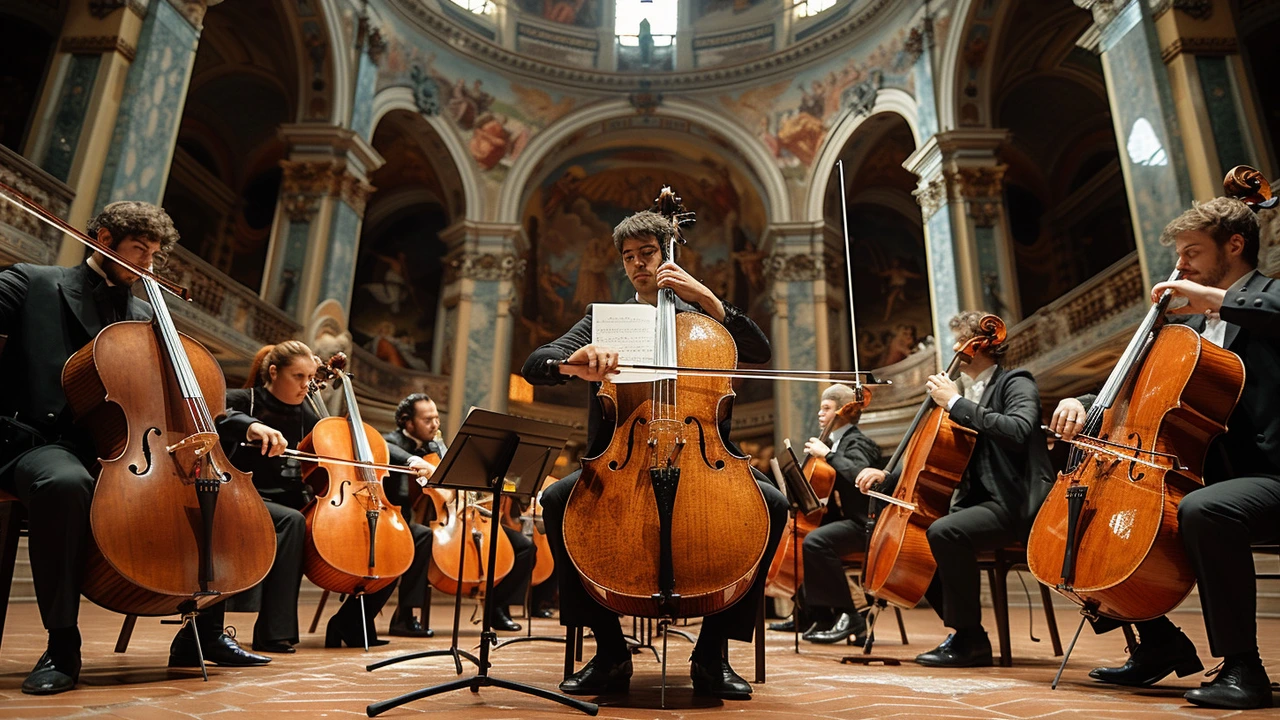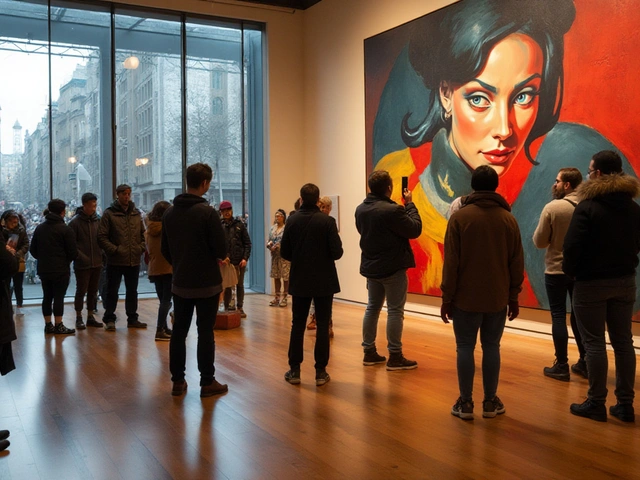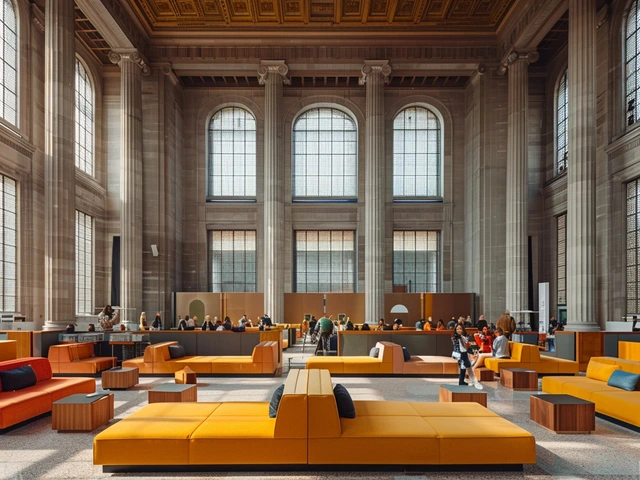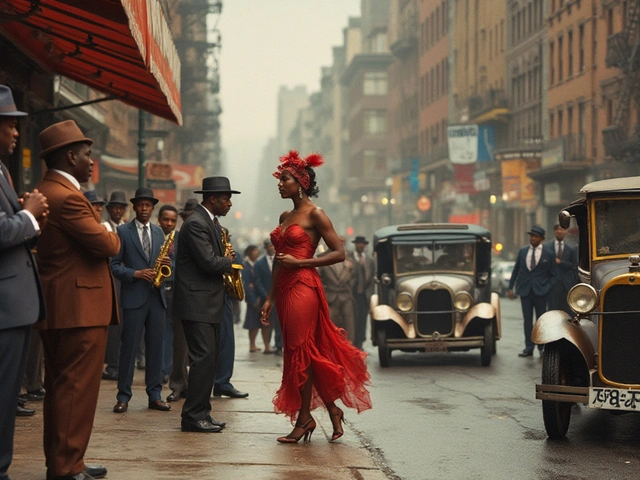The Essence of Baroque: A Musical Revolution
Oh, the Baroque era! Imagine a time when the ornate and extravagant flourished, not just in art and architecture but also in music. Calm your modern-day nerves, dear reader, for we are about to embark on a melodious journey through time, where music was more than just sound—it was the heartbeat of an era. The period from 1600 to 1750 was witness to incredible advancements and mastery in music, led by the likes of Vivaldi, Bach, and Handel. It was as if composers were the original rock stars, turning the sixteenth notes into the strums of the age and harmonies into the hymns of sophistication. And why, you may wonder, am I waxing lyrical about Baroque? A certain little Melody at home (yes, that's my daughter's name, and, no, I never tire of the pun) has been learning the harpsichord, and that’s right, we’ve been living in a delightful time warp of sorts! There's truly something bewitching about Baroque music that transcends time, captivating our modern ears as it did centuries ago.
Harmony and Complexity: The Musical Signature of Baroque
Much like a triple-layer chocolate cake that pleases the palate with its complexity, Baroque music surprises and delights with its intricate layers of sound. It’s a full-bodied musical experience with harmonic structures that create a stunning audio tapestry. The texture? Predominantly polyphonic, that's multiple melodies interweaving like a dance of sonic delight. Think of fugues and canons where the challenge isn’t just in playing the notes but in understanding the intimately conversing musical lines. It's kind of like attending an 18th-century soirée in your best wig and frock, engaging in conversations that twirl and dip with eloquent charm. Each time I listen to Pachelbel’s Canon, I can't help but marvel at how the same musical line, when staggered in its entry, can transform into something deeply moving, an aural hug if you will. And let’s not forget the use of the basso continuo, the era's version of a defiant bass drop, anchoring the harmonies and keeping us tethered to the rhythm as the higher notes flutter off into rhapsody.
The Stars of the Show: Baroque Composers and Their Works
Vivaldi’s “Four Seasons” paints musical imagery so vivid that you can almost feel the chill of winter or the tenderness of spring through his notes. Johann Sebastian Bach, the father figure of Baroque, took musical complexities to celestial heights with his “Brandenburg Concertos"; listening to them feels akin to having a conversation directly with the divine. And, Handel, whose “Messiah” has become a Christmas staple, ensures no yule tide season is without its share of Alleluias. These composers were the celebrities of their time, cheered on by European nobility and commoners alike. Their music sticks like your favorite jam—a tune can cling to your memory for days on end. Each composer had a unique voice within the soundscapes of the period, setting trends in composition that ripple through time to inspire modern day musicians and composers. It's like they knew they were creating a legacy, one hemidemisemiquaver at a time.
The Instruments That Spoke Baroque
The lovely melodies and harmonies of the Baroque period owe much of their character to the instruments of the time. The harpsichord, with its distinctive plucked string sound, was the keyboard star before the piano swayed the musician's affections. The violin family reigned supreme among the strings, while woodwinds like the recorder and the oboe began to find their voice. Brass instruments, particularly the natural trumpet and the horn, added regal flair to the music. The ever-thumping undercurrent was often provided by the Baroque timpani. All of these instruments came together in a concerto grosso, like a perfectly cast play, each with a role that played to its strengths. It's like having just the right amount of sparkle and punch to throw the most memorable party—or in this case, the most memorable symphony.
Musical Features: The Devil's In the Details
If one were to dissect Baroque music, one would find features that are as fascinating as they are fundamental to the style. Notes inégales, the practice of playing pairs of notes unequally for expressive effect, a little like syncopation’s aristocratic ancestor, gave the music a sense of refined groove. Ornamentations, like the trill and the mordent, were the musicians’ equivalent of chefs adding a dash of spice to a dish, enhancing flavors already present in the composition. Dynamics began taking on greater importance, though not quite as nuanced as in later classical periods. They were more terraced, like sudden shifts from quiet to loud, which in technical terms is like the musical equivalent of jumping from a whisper to a shout without the in-betweens. It was all about contrast and drama, adding to the already palpable tension and expression inherent in the music of the time.
The Cultural Impact: Baroque's Ripple Through Time
Baroque, like an ambitious vine, has woven itself through the fabric of time, influencing countless artists and genres beyond its own age. The complexity and emotive power of Baroque compositions continue to resonate in everything from film scores to progressive rock. For instance, the flare of a trumpet in an epic movie scene often owes its heroic charge to the influence of Baroque music’s grandiosity. Even in popular culture, the echoes of Baroque’s intricate melodies and vigorous energy can be heard in the pop hits that get our toes tapping. It's breathtaking to think that the notes crafted centuries ago, possibly by a candle-lit desk, continue to shape the soundtracks of our lives. The Baroque era may have been a small slice in the large pie of music history, but it sure did pack a flavorful punch!
The Baroque Lifestyle: More Than Just Music
The lively spirit of the Baroque era seeped into much more than music—it was a lifestyle, an aesthetic, an attitude. Baroque mirrored the grandeur and drama found in the ornate churches and palaces with its gilt and frescoes. Fashion followed suit, with silks, satins, and lace adorning those who wished to be au courant with the times. The same love for embellishment and detail found in the music of Vivaldi or Scarlatti could be seen in the way a gentleman chose his wig or how a lady stitched her embroidery. It was an all-encompassing vibe, one that spoke to a collective enthusiasm for rich experiences and artful expression. Music was just the delicious cherry on top of a very extravagant sundae. And much akin to the tasteful grandiosity of a Baroque concerto, life during this era was meant to be lived out loud and lavishly so!
Performing Baroque Today: The Historical Performance Practice
Fast forward to today, and engaging with Baroque music has become somewhat akin to entering a time machine. Historical performance practice is all about authenticity—recreating the sound and feel of the period with period-correct instruments and playing techniques. There’s a certain thrill in hearing a piece performed as it would have been heard by ears centuries ago. Musicians become detectives, scholars, and artists all at once, deciphering old musical texts and breathing life into notes with a dose of ancient flair. Ensembles dedicated to this practice, like the Academy of Ancient Music, even dress the part, which adds to the immersive experience. It’s history, art, and music rolled into one delightful package, like nosing through your grandmother’s attic and finding treasures that tell tales of a bygone era.
Teaching the Next Generation: Baroque in Music Education
The value of introducing the younger set to Baroque music is immense—and I don't say that just because my dear Melody now hums Vivaldi while she does her homework. Learning Baroque helps develop a youngster's musical understanding and appreciation for history. It’s about passing on a tradition, a shared musical heritage that has more layers than a lasagna. When kids grapple with the fugues and the ornate styles, they're not just learning music; they're flexing their cognitive and cultural muscles, building up skills that are transferable beyond the world of semiquavers and trills. My little one has developed a patience and a precision that often eludes adults. Plus, it's a way to connect the dots—from the past, through the present, into the future—so our kids can grasp the beauty and longevity of musical expression.
Baroque's Modern-Day Relevance
So why, in an era brimming with electronic beats and auto-tune, does Baroque music matter? Well, it is timeless; it deals with emotions and stories that are as relevant today as they were in the 1700s. Have you ever felt the thrill of a crescendo, the joy in a vibrant allegro, or the solace of a somber adagio? That’s the human experience, captured in melodies and rhythms composed long before the age of the internet. It’s amazing how a Baroque piece can both reflect its time and transcend it, appealing to the universal human spirit. And, from a less philosophical angle, it’s also kind of cool to throw on some Bach, impressing your friends with your eclectic taste while secretly relishing the fact that you're also giving your brain a fine workout with complex polyphony. Baroque isn't just a musical genre; it's a bridge that connects us to our ancestors through the language of emotion and the arts. And let's be honest, having a harpsichord ringtone gives off an elusive aura of historical chic, don't you think?




